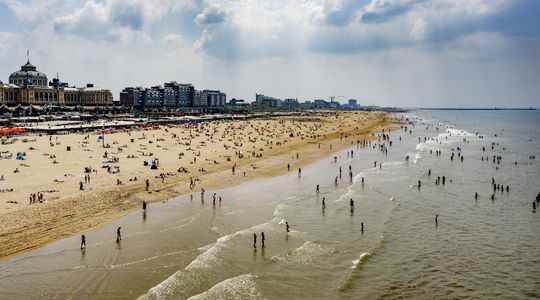As part of the annual meeting of the Intercontinental Oceanographic Commission and two days before the United Nations Conference on the Oceans, UNESCO warned on Tuesday that the probability of seeing a tsunami in the next thirty years at least a meter high to break in the Mediterranean was 100%. For the UN organization, it is necessary that the local authorities take up the problem and prepare themselves by following the recommendations of its program entitled “Tsunami Ready”. To date, none of the municipalities located in risk areas, such as those located on the coasts of the Aegean Sea, Turkey, the Côte d’Azur or the Stromboli region have this label. However, some municipalities, such as Cannes in France, are aware of the stakes and take part in simulation exercises every year.
Learn to inform, to evacuate and to shelter: these, according to the coordinator of the Tsunami Alert Center for the Atomic Energy Commission (CEA), Hélène Hébert, are the messages that the authorities must seize communities at a time when tsunamis are likely, because of the high concentration of population around the coasts, to cause terrible damage.
L’Express: Unesco indicates that there will definitely be a tsunami at least one meter high in the next thirty years in the Mediterranean Sea. How do you react to this announcement?
Helen Hebert: We were a little surprised, at the Tsunami Warning Centre, by the precision of the declaration of Unesco, studies on tsunamis wanting to be more probabilistic than predictive. But it is logical that for the holding of the Annual Assembly of the Intergovernmental Oceanographic Commission, Unesco wants to communicate on a phenomenon with often serious consequences, and which occurs much more often in the Mediterranean than citizens think. In October 2020, for example, a tsunami killed around 30 people on the greek island of Samos and caused extensive damage on the Turkish coast. The tone of Unesco is a little catastrophist but it has the merit of highlighting a reality: phenomena will occur in the next thirty years and the authorities must be ready to deal with them.
To date, the European authorities are not ready to react effectively in the event of a tsunami?
Initiatives exist to prepare municipalities to manage this type of disaster, but this requires a major procedural effort, with signaling work, public awareness, preparation of evacuation routes… The major fear is that Tsunami hits as beaches are crowded. How to evacuate thousands of people in a few minutes? Where to shelter them? Many questions arise. It is a long-term task and Unesco, with its “Tsunami Ready” program, helps municipalities to prepare. By saying that a large-scale tsunami will occur within thirty years, Unesco wants to encourage local communities to be better prepared.
How far in advance can we predict the arrival of a tsunami?
It varies greatly. For example, the one that hit the Greek and Turkish coasts in 2020 arrived very quickly, in less than half an hour. This left little time to evacuate. The alert system has been triggered but it inevitably has limits since it relies on the good preparation of those present. During the 2004 tsunami in the Indian Ocean, we see tourists filming for long minutes the withdrawal of the sea. This is a mistake. If you feel tremors and see the sea receding, you must immediately take refuge on the heights. Because if the sea recedes, it will eventually come back in force.
Is France particularly exposed?
It is obviously much less than a country like Japan and, in the Mediterranean, a little less than Greece or Turkey. However, the Côte d’Azur is subject to earthquakes and underwater landslides that can cause tsunamis. There is a well-documented case in Nice dating back to February 1887. An earthquake off the coast of Genoa generated a tsunami two meters high. For several hours, a continuous back and forth of water had been observed. More recently, in 1979, a tsunami caused by an underwater landslide killed one person in Antibes.
In France, the municipalities are responsible for their backup plan, and a municipality like Cannes takes the issue very seriously by participating in exercises, especially during World Tsunami Awareness Day, which is held on November 5. The Cannes authorities are working on the signage to be adopted in the event of an incident and are trying to raise awareness among residents without panicking them. Unesco helps cities to better focus their prevention and preparedness policy. For example, by encouraging town halls to make areas likely to be exposed to tsunamis unbuildable. On tourist coasts, these are difficult decisions to make.
Is the tsunami risk greater today than in the past?
The threat is constant over time if we rely on the physical triggering of the phenomenon, but as the coastline has evolved through human action, the consequences are increasingly important. If we take the 1887 tsunami in Nice, we notice that there are far fewer homes, almost no tourists, facilities, and yet the toll has exceeded 600 dead. The same phenomenon today would be even more destructive. What increases is what is called vulnerability, due to increased exposure to the hazard. As for global warming, it accentuates neither the frequency nor the power of tsunamis, but by causing an increase in sea level, it can make it more destructive, the sea having moved closer to land level.
